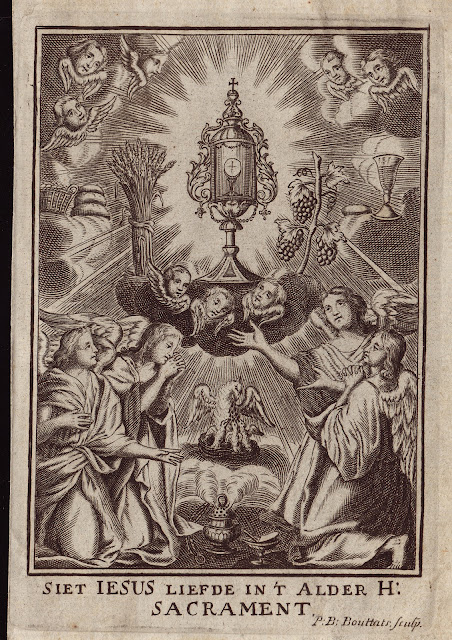Getty Images - The Christ lies on an andas during the Good Friday's 'Santo Entierro' (Holy Burial) procession on April 22, 2011, in Guatemala City.
Getty Images - A Paraguayan plays the Christ during the tableau vivant 'The Descent from the Cross', in Misiones, 225 km south of Asuncion, during Good Friday on April 22, 2011.
Reuters Pictures - A figure of Jesus Christ on the cross is covered with plastic during a re-enactment of the Via Crucis (Way of the Cross) during Good Friday celebrations in Valparaiso city, about 121 km (75 miles) northwest of Santiago April 22, 2011. The figure was covered with plastic before it was carried out onto the streets to protect it from the rain.
Reuters Pictures - An actor playing the role of Judas hangs on a tree during an re-enactment of the crucifixion of Jesus Christ on Good Friday during Holy Week in Comas, on the outskirts of Lima, April 22, 2011
Getty Images - ROME, ITALY - APRIL 22: A nun attends the Way of the Cross at the Colosseum, held by Pope Benedict XVI, on April 22, 2011 in Rome, Italy. The Way of the Cross, or Stations of the Cross, is often commemorated on Good Friday and is a representation of the final hours of Jesus for Catholics worldwide.
Getty Images - ROME, ITALY - APRIL 22: Pope Benedict XVI waves to the faithful gathered at the Colosseum at the end of the Way of the Cross on April 22, 2011 in Rome, Italy. The Way of the Cross, or Stations of the Cross, is often commemorated on Good Friday and is a representation of the final hours of Jesus for Catholics worldwide.
Getty Images - Penitents stand close to a Christ as they take part at 'Signuri di li Fasci' Good Friday procession in Pietraperzia, a small town in central sicily near Caltanissetta on April 22, 2011.
Reuters Pictures - Members of the Italian Catholic community take part in a re-enactment of the crucifixion of Jesus Christ on Good Friday in Ulm near Stuttgart, in southwest Germany April 22, 2011.
Getty Images - WASHINGTON, DC - APRIL 22: A statue of Jesus Christ is carried through Dupont Circle during the Via Crusis, or 'Way of the Cross,' to mark Good Friday April 22, 2011 in Washington, DC. About 200 Catholics 'walked in the footsteps of Christ' and carried wooden crosses and statues from Our Lady, Queen of the Americas Catholic Church to the Cathedral of St. Matthew.
Getty Images - WASHINGTON, DC - APRIL 22: Cardinal Donald Wuerl, Archbishop of Washington, blesses a man as he carries a heavy wood cross into the Cathedral of St. Matthew during the Via Crusis, or 'Way of the Cross,' to mark Good Friday April 22, 2011 in Washington, DC. About 200 Catholics 'walked in the footsteps of Christ' and carried wooden crosses and statues from Our Lady, Queen of the Americas Catholic Church to the cathedral.
Getty Images - WASHINGTON, DC - APRIL 22: Covered in plastic to protect it from the rain, a statue of Jesus Christ is stands inside Our Lady, Queen of the Americas Catholic Church before being carried on the Via Crusis, or 'Way of the Cross,' to mark Good Friday April 22, 2011 in Washington, DC. About 200 Catholics 'walked in the footsteps of Christ' and carried wooden crosses and statues through the Dupont Circle neighborhood to the Cathedral of St. Matthew.
Reuters Pictures - Penitents carry a statue representing the dead Christ as they take part in a Good Friday procession in Civitavecchia, 70km (43 miles) north of Rome, April 22, 2011.
Getty Images - A member of the Brotherhood of El Santo Entierro participates in the Via Crucis procession as part of Good Friday ceremonies in the town of Nahuizalco, 72 km west of San Salvador, on April 22, 2011. The procession remembers how Jesus was beaten, mocked and crowned with thorns before being crucified by the Romans.
AP Photo - Faithful gather for the Via Crucis (Way of Cross) procession before the Colosseum on Good Friday in Rome, Friday, April 22, 2011. The evening Via Crucis procession at the ancient amphitheater is a Rome tradition that draws a large crowd of faithful, including many of the pilgrims who flock to the Italian capital for Holy Week ceremonies before Easter Sunday.
AP Photo - A woman sits with her dogs as she watches a Holy Week procession on
Good Friday in
Havana, Friday, April 22, 2011. Holy Week commemorates the last week of the earthly life of Jesus Christ culminating in his crucifixion on Good Friday and his resurrection on
Easter Sunday.
AP Photo -People attend a Holy Week procession on
Good Friday in
Havana, Friday, April 22, 2011. Holy Week commemorates the last week of the earthly life of Jesus Christ culminating in his crucifixion on Good Friday and his resurrection on
Easter Sunday.
AP Photo - A priest, right, gestures as seminarians carry an image of Jesus Christ during a Holy Week procession on Good Friday in Havana, Friday, April 22, 2011. Holy Week commemorates the last week of the earthly life of Jesus Christ culminating in his crucifixion on Good Friday and his resurrection on Easter Sunday.
AP Photo - Pope Benedict XVI, right, presides over the Via Crucis (Way of Cross) procession on Good Friday in Rome, Friday, April 22, 2011. The evening Via Crucis procession at the ancient amphitheater is a Rome tradition that draws a large crowd of faithful, including many of the pilgrims who flock to the Italian capital for Holy Week ceremonies before Easter Sunday.
AP Photo - Some hundreds of believers attend the Good Friday procession along the streets of Warsaw, Poland, on Good Friday, April 22, 2011. Good Friday processions at Easter time are along-standing tradition in predominantly Roman-Catholic Poland. Portrait of late Pope John Paul II seen above, who was born in Poland.
Reuters Pictures - Church helpers carry a statue of an angel in the Zebbug parish church before a Good Friday procession in the village of Zebbug, outside Valletta, April 22, 2011. Several Easter processions take place all over the Maltese islands during Holy Week, drawing large numbers of visitors.
Reuters Pictures - Participants walk out of the Zebbug parish church during a Good Friday procession in the village of Zebbug, outside Valletta, April 22, 2011. Several Easter processions take place all over the Maltese islands during Holy Week, drawing large numbers of visitors.
AP Photo - Pope Benedict XVI, center, greets the faithful during the Via Crucis (Way of Cross) torchlight procession celebrated in front of the Colosseum on Good Friday in Rome, Friday, April 22, 2011. The evening Via Crucis procession at the ancient amphitheater is a Rome tradition that draws a large crowd of faithful, including many of the pilgrims who flock to the Italian capital for Holy Week ceremonies before Easter Sunday.
Getty Images - Amateur actors re-enact the crucifixion of Jesus Christ during a Good Friday procession on April 22, 2011 in Wuppertal, western Germany. Thousands of visitors across the country came to watch processions depicting the Stations of the Cross of Jesus Christ.
AP Photo - An actor performs as Jesus Christ during a Via Crucis on Good Friday in Asuncion, Paraguay, Friday, April 22, 2011.
AP Photo - A man kisses a statue of Jesus during a mass before a Holy Week procession on Good Friday in Havana, Friday, April 22, 2011.
AP Photo - Children disguised as angels participates in the staging of the Passion of Jesus in Arraijan, outskirts of Panama City, Friday, April 22, 2012. Holy Week commemorates the last week of the earthly life of Jesus Christ culminating in his crucifixion on Good Friday and his resurrection on Easter Sunday.
Getty Images - NEW YORK - APRIL 22: Frank Simmonds carries the cross in the Way of the Cross procession out of St. James Cathedral before walking over the Brooklyn Bridge April 22, 2011 in New York City. The traditional Catholic procession on Good Friday recalls the crucifixion of Jesus Christ ahead of Sunday's Easter holiday.
Getty Images - NEW YORK - APRIL 22: Firefighter John Barlett carries the cross in front of Ground Zero during a Way of the Cross procession April 22, 2011 in New York City. The traditional Catholic procession on Good Friday recalls the crucifixion of Jesus Christ ahead of Sunday's Easter holiday.
Getty Images - NEW YORK - APRIL 22: A crucifix is held during a Way of the Cross procession April 22, 2011 in New York City. The traditional Catholic procession on Good Friday recalls the crucifixion of Jesus Christ ahead of Sunday's Easter holiday.
Getty Images - Pope Benedict XVI holds the Cross during the celebration of the Lord's Passion on Good Friday on April 22, 2011 at Saint Peter's Basilica at The Vatican. Pope Benedict XVI, celebrates the Passion of the Lord in the afternoon before presiding over the stations of the Cross, re-enacting Jesus Christ's final hours and crucifixion, later in the evening at Rome's Colosseum.






Members of the Faith Community of St. Sabina said Wednesday evening that Fr. Michael Pfleger was "ambushed" when he was given a letter of suspension by Francis Cardinal George...
In the letter, George wrote he didn’t think the conflict was personal.


































